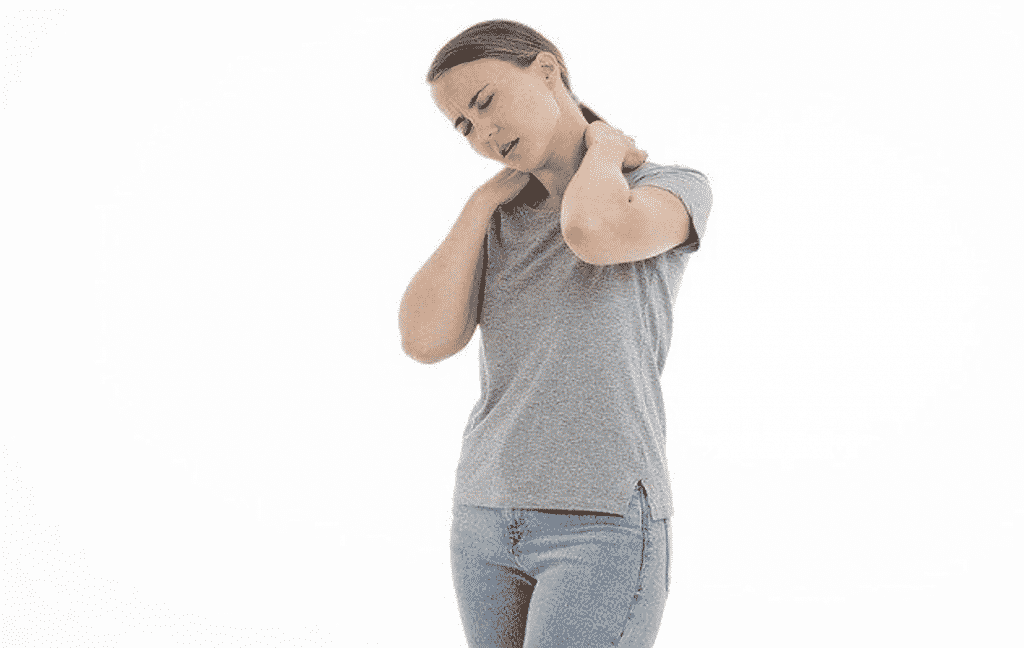If you’re like most other Americans, you likely spend hours every day looking down at a laptop screen or your mobile phone or tablet. The time we put in looking at such devices tends to be getting higher while our investment in stretching and otherwise trying to combat our lousy posture is often minimal or non-existent.
If we keep going this way without making any changes, though, we can start to get headaches, back pain, rounded shoulders, and other issues that can be difficult to overcome. As such, it’s vital to understand “tech neck” ASAP and know some ways to beat it.
What Causes Tech Neck
Muscles in the back of the neck get overly utilized, tired, and sore when they have to work more every day to keep our heads up. When we spend hours looking down at smartphones, laptops, and other devices and objects, the muscles in the back of the neck contract to hold the head in that position. “Tech neck,” so named since it stems from most of us spending so much time using technology, then develops. You can get back pain, too, that stems from the neck muscles being tight and issues traveling further down along the body as different areas compensate.
Problems Created by Tech Neck
Tech neck can lead to a variety of uncomfortable and painful symptoms. For example, the most common complaints include headaches, neck spasms, pain between the shoulder blades, and stiff necks that have trouble moving freely from side to side and up and down. You may notice that it’s a struggle to look up at the sky or look right down when you have a tech neck.
In more severe situations, people can end up with numbness, weakness, or tingling down their arms. This occurs due to nerves being pinched in the neck. Over time, more serious problems can evolve from tech neck, too. For example, when you continue the bad posture and keep looking down a lot, the muscles that have to strain to hold your head up tighten more and more, and you end up with significant pressure on the discs in your back as a result.
These discs will wear out more quickly than they otherwise should and can bulge or rupture. If a rupture ends up pinching a nerve in your back, too, you can also get pain, weakness, and numbness in your arm, and may need to get surgical treatment to rectify the problem.
What to Do If You Have Tech Neck
Thankfully, you can do things to be proactive about addressing tech neck if it develops for you. For example, get up and move frequently rather than sitting in one place for too long. Every 15 to 20 minutes, rise and walk around, even if just for a minute or two. This movement will get the blood circulating again in your body and lift your neck into a different position.

You should also ensure you work or otherwise sit in a chair with adequate lumbar support that reclines at least a little so you can lean back somewhat. This will help take some of the pressure off your neck muscles and means they don’t have to do so much straining. Where possible, though, get into the habit of working standing up, with your laptop or other device sitting up high enough that you don’t have to slouch forward to read or type, etc.
It’s wise to see a doctor if you have any of the severe symptoms listed above, but prevention is the best cure. Take time to exercise most days, especially aerobic activities that won’t cause you neck pain. Your neck and back will be stronger and healthier as a result, and you shouldn’t suffer from as much tension or pain due to tech neck. A massage, acupuncture, stretching exercises like yoga and Pilates, and seeing a chiropractor or physiotherapist can also help.
If pain is still an issue and you need some way of getting by until you can see a specialist, you might like to consider using marijuana to help you relax, feel less pain, and loosen up the muscles in your neck, shoulders, and back. Search online for a dispensary near you selling these products. For instance, you might look for a trusted Massachusetts marijuana clinic in your area.
The best thing you can do for yourself, though, is try to remember to look up and away from your devices as much as possible. This is sure to help your mental health and your neck, and the rest of your physical health, too.

